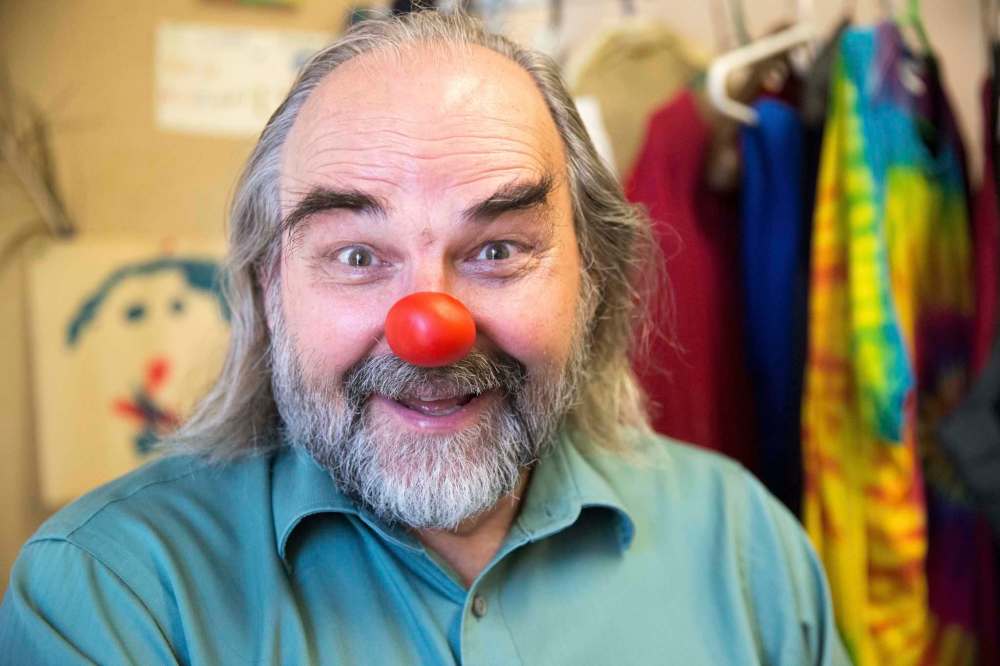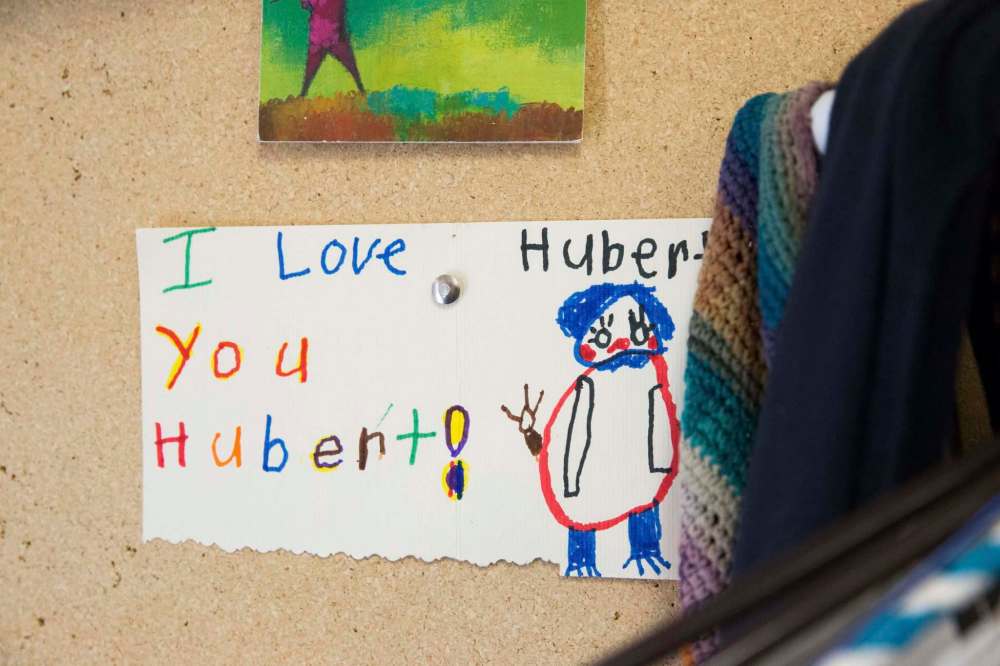His last laugh
Therapeutic clown retires after 30 years at Children's Hospital
Advertisement
Read this article for free:
or
Already have an account? Log in here »
To continue reading, please subscribe:
Monthly Digital Subscription
$0 for the first 4 weeks*
- Enjoy unlimited reading on winnipegfreepress.com
- Read the E-Edition, our digital replica newspaper
- Access News Break, our award-winning app
- Play interactive puzzles
*No charge for 4 weeks then price increases to the regular rate of $19.00 plus GST every four weeks. Offer available to new and qualified returning subscribers only. Cancel any time.
Monthly Digital Subscription
$4.75/week*
- Enjoy unlimited reading on winnipegfreepress.com
- Read the E-Edition, our digital replica newspaper
- Access News Break, our award-winning app
- Play interactive puzzles
*Billed as $19 plus GST every four weeks. Cancel any time.
To continue reading, please subscribe:
Add Free Press access to your Brandon Sun subscription for only an additional
$1 for the first 4 weeks*
*Your next subscription payment will increase by $1.00 and you will be charged $16.99 plus GST for four weeks. After four weeks, your payment will increase to $23.99 plus GST every four weeks.
Read unlimited articles for free today:
or
Already have an account? Log in here »
Hey there, time traveller!
This article was published 24/08/2019 (2291 days ago), so information in it may no longer be current.
A hospital can be a scary place for parents, and David Langdon knows it’s even scarier for their children.
As the Children’s Hospital of Winnipeg’s resident therapeutic clown, it’s Langdon’s job to help children, parents and siblings forget about the tests and the uncertainty, and instead, play.
“We try to normalize the hospital experience for them,” Langdon said. “We try to focus on what’s healthy in the child and take the focus away from the symptoms.”

After 30 years behind the makeup, Langdon is hanging up his red therapy nose for good.
He took over the program from program initiator and fellow clown Karen Ridd in 1989. Established at the children’s hospital in 1986, it was the first clown therapy program in the world. For three decades, his work has given hospitalized children the opportunity to regain hope through interactions with his two clown personas, Hubert and Onri.
Something of a rock star among the kids, Langdon appears on the hospital’s TV show, The Good Day Show, where the children are introduced to Hubert, the silent klutzy clown; Onri, the European clown doctor; and the puppet NoName.
At least twice a week, the clowns go to the wards to meet their fans.
Instead of thinking about the pain, anxiety and recovery, kids have the chance to make connections and relationships with the stars of the show, and have some fun with NoName, Hubert and Onri.
These clowns aren’t just there for laughs. Langdon uses the personas to make the children feel they are listened to and are in control of their situation.
“There’s lots of laughter and lots of fun,” Langdon says, “but sometimes, it’s hard. It’s just being there for them where they’re at.”

Often, other specialists at the hospital will bring in one of the clowns to make the kids feel more comfortable.
Langdon recalled a time when a boy in the bone marrow transplant unit met Hubert. The boy saw the clown as a five-year-old boy, just like him. Only, when Hubert put on his costume and makeup, he got big, and when he took it off, he got small again and went home to his mom.
“Going away from this job… I’m so grateful,” Langdon said.
The art of clowning prioritizes feeling one’s emotions, being present and, above all, remembering to play. It’s because of that, and because of Hubert, Onri, NoName and David, that the therapeutic clown program has been so important to the families at the children’s hospital, reminding the children that laughter is the best medicine.

